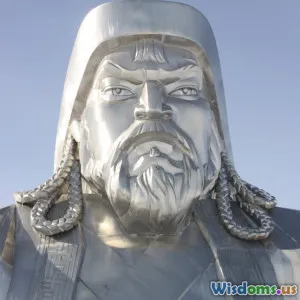
Groundbreaking Figures in Technology
8 min read Explore history's tech pioneers whose innovations reshaped the world, from computing to the internet. (0 Reviews)
Groundbreaking Figures in Technology: Innovators Who Changed the World
Introduction
Imagine a world without smartphones, computers, or the internet. It’s hard to fathom today, yet this was the reality just a century ago. The technological marvels we now take for granted were born from the tireless work and visionary ideas of pioneering figures in technology. These groundbreaking individuals defied the limits of their times, pushing the boundaries of knowledge and engineering that would lay the foundation for the digital revolution. This article dives deep into the stories and contributions of some of history’s most influential tech visionaries — figures whose innovations shaped the course of human progress.
The Pioneers Who Laid the Foundation
Ada Lovelace: The First Computer Programmer
Often hailed as the world's first computer programmer, Ada Lovelace’s contributions to technology were visionary and monumental. Working with Charles Babbage’s early mechanical general-purpose computer, the Analytical Engine, in the mid-1800s, Lovelace wrote what is considered the first algorithm intended for a machine.
What made Lovelace exceptional wasn’t merely her mathematical prowess but her insight into the possibility beyond number crunching — the potential for the machine to manipulate symbols and create music or art, foreshadowing the modern computer.
"That brain of mine is something more than merely mortal; as time will show." — Ada Lovelace
Her foresight has cemented her as a figure of inspiration, especially in the push to bring more women into STEM fields today.
Alan Turing: The Father of Modern Computing
During World War II, Alan Turing's genius not only cracked the infamous German Enigma code but set the intellectual architecture for modern computers. His theoretical work introduced the concept of a universal machine — what we now consider the basis for the Turing machine and the fundamental model for computation.
Turing’s ideas laid the groundwork for digital computing and artificial intelligence. Despite facing persecution due to his personal life, his legacy persists, highlighting both triumph and tragedy.
Grace Hopper: The Queen of Code
Rear Admiral Grace Hopper was pivotal in making programming accessible. She developed the first compiler, which transformed human-readable code into machine language, greatly simplifying software development.
Hopper's work on COBOL, one of the earliest programming languages still influential today, democratized computing beyond mathematics and engineers, helping businesses harness the power of technology. Her famous phrase "It's easier to ask forgiveness than it is to get permission" reflects her pioneering spirit.
Innovators Who Transformed Networking and Hardware
Vint Cerf and Bob Kahn: Architects of the Internet
The internet, a linchpin of our connected lives, was shaped by Vint Cerf and Bob Kahn’s invention of TCP/IP protocols in the 1970s. These protocols enabled diverse computer networks to interconnect and communicate seamlessly, essentially making a global network possible.
Their engineering brilliance earned them the title "Fathers of the Internet," underscoring how their proof of concept evolved into billions of devices communicating continuously today.
Robert Noyce: The Silicon Revolution Catalyst
Often overshadowed by more public faces, Robert Noyce co-invented the integrated circuit in 1959, adding a cornerstone element that made miniaturization of electronics feasible. Noyce’s leadership also helped found Intel Corporation, the company behind iconic microprocessors powering personal computers.
The combination of performance, affordability, and scalability made possible by integrated circuits launched the silicon age, catalyzing the proliferation of digital technology worldwide.
Hedy Lamarr: The Actress Turned Wireless Communication Pioneer
While more famous for her Hollywood career, Hedy Lamarr co-developed frequency-hopping spread spectrum technology during World War II. This approach allowed secure radio transmissions, a technology later foundational to Bluetooth, Wi-Fi, and GPS.
Lamarr’s story dismantles stereotypes, showing how innovative capabilities can emerge from unexpected quarters, emphasizing diversity in technology advancement.
State-of-the-Art Visionaries and Their Impact
Steve Jobs: Revolutionizing Personal Computing and Consumer Tech
Steve Jobs’ impact is synonymous with Apple’s rise and the transformation of consumer electronics. He shaped products that combined technology with artistry and user experience, notably the Macintosh, iPod, iPhone, and iPad.
Jobs’ insistence on sleek design and intuitive interfaces made technology accessible and desirable, impacting lifestyles and business for decades.
Tim Berners-Lee: Inventor of the World Wide Web
The Web’s invention by Tim Berners-Lee stands as a defining moment in communication history. By creating HTTP, HTML, and URLs in 1989, Berners-Lee enabled the weaving of scattered data into a cohesive ecosystem accessible by anyone.
Today’s digital culture, commerce, and information exchange rest heavily on this framework, with billions of users worldwide benefiting daily.
Conclusion
The stories of these groundbreaking technology figures highlight the extraordinary human capacity to innovate and solve complex problems. Their legacies live not only in the devices, systems, and protocols they created but also in the ongoing inspiration they provide to generations of innovators and learners.
By understanding their journeys, challenges, and achievements, we gain insight into the essence of technological progress — tenacity, creativity, and vision. As technology continues to evolve at a dizzying pace, the pioneering spirit of these individuals reminds us that today's breakthroughs are built upon yesterday's dreams.
In a world increasingly shaped by technology, these figures offer not only historical lessons but a clarion call to nurture innovation, cultivate diversity, and push the boundaries of what is possible for the benefit of all humanity.
References:
- "Ada Lovelace: The First Programmer" by Christopher Hollings et al., Communications of the ACM, 2012.
- Andrew Hodges, Alan Turing: The Enigma, 1983.
- Grace Hopper Biography, Computer History Museum.
- Vint Cerf Oral History, IEEE, 2009.
- "Robert Noyce and the Silicon Revolution," Intel Archives.
- Interview with Hedy Lamarr, Smithsonian Magazine, 2014.
- Walter Isaacson, Steve Jobs, 2011.
- Tim Berners-Lee, "The World Wide Web: Past, Present and Future," 2000.
Rate the Post
User Reviews
Popular Posts



















